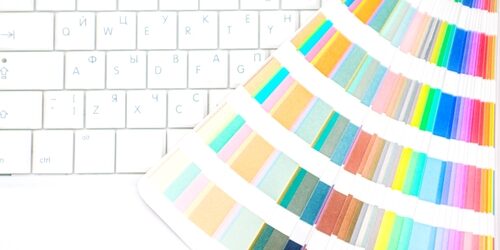If you’ve ever told someone you’re a UX designer, you’ve probably been met with the question, “but, what do you do?” Professional titles can sometimes be misleading, overcomplicated, or just downright confusing. For UX designers, explaining their job to someone who’s not familiar with the different types of web design jobs can be challenging.
Here’s how to break it down for those outside of the industry:
What is UX Design?
Before anyone has a shot at understanding the role of a UX designer, he or she must first understand that UX is more than just an interesting choice of letters. According to Smashing Magazine, an online resource for the graphic design community, UX stands for User Experience, and the term refers to the ease with which a visitor can explore a site, application, or other human-computer interaction (HCI).
UX design takes into account many different factors, including human psychology, visitor analytics, and marketing, noted Smashing Magazine. It includes various data compiled by testing throughout the project, as well as trials after its completion. While past design used to be based on artist and client preferences, UX forces the consideration of the end user, who should always be the focus of marketing, whether it involves design or copy.
What are the main responsibilities of the job?
Once all of the abbreviations like UX and HCI are understood, people should have an easier time comprehending what these designers do every day. According to UXmatters, a site devoted to UX and UI professionals, a UX designer’s responsibilities can range anywhere from considering the backend functionality, like search capabilities and navigation, to user testing and analysis. One day, he or she could share the wireframe of the home screen with the IT team, and the next day could be devoted to reviewing survey results from users who tested the page navigation. With so many responsibilities and technical skills to master, a UX designer’s job could significantly vary depending on the company, project, or day of the week.
How do you judge good UX?
A UX design strategy is crucial to a high-performing website, as it could encourage or hinder conversion rates. For instance, imagine users who have difficulty finding their shopping cart on an e-commerce site that didn’t take into account proper design mechanisms. Users could get frustrated if the buying process isn’t intuitive, and the company could see visitors drop off as a result, which would flag marketing analysts of an issue with the layout.
According to UX Magazine, the key to a functional design is multiple rounds of testing. The same way a writer needs an editor to ensure quality, a UX designer needs testers. What could seem intuitive to a designer who has been working on a site for months could still be difficult to navigate to a brand new visitor. Before a user ever sees a website or app, many people have tested its usability and functionality to ensure a good experience.
Examples of good design include clear calls to action, vibrant, relevant images, and intuitive web forms, according to examples on Web Designer Depot, a blog for web design and development. When designing for a smartphone, a designer must consider how the device is held. As most people are right-handed and use their thumb to navigate through a site, a sidebar on the left-hand side would be ideal. Also, while hover effects are fun, effective ways to explore a site on a computer, they’re typically not functional on a tablet or smartphone, where no mouse is necessary. An effective, properly designed and tested layout will take all of these factors into consideration.
Contract and Direct Hire job openings are updated daily. View all job listings here!








